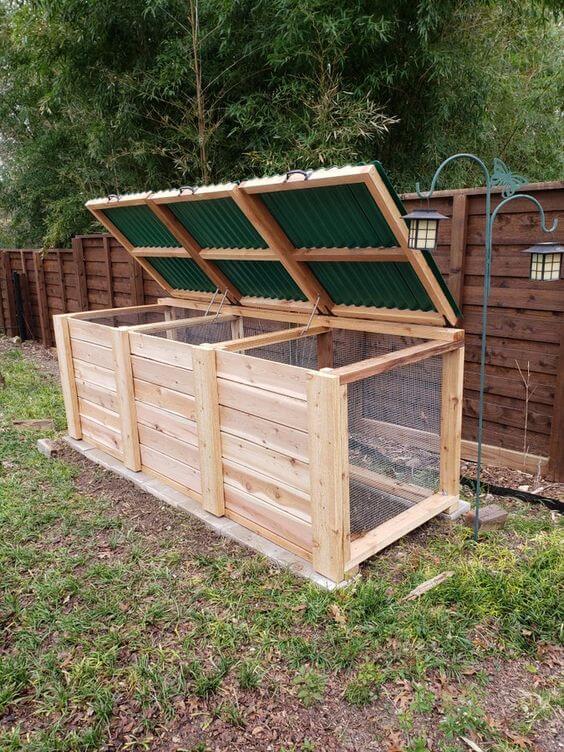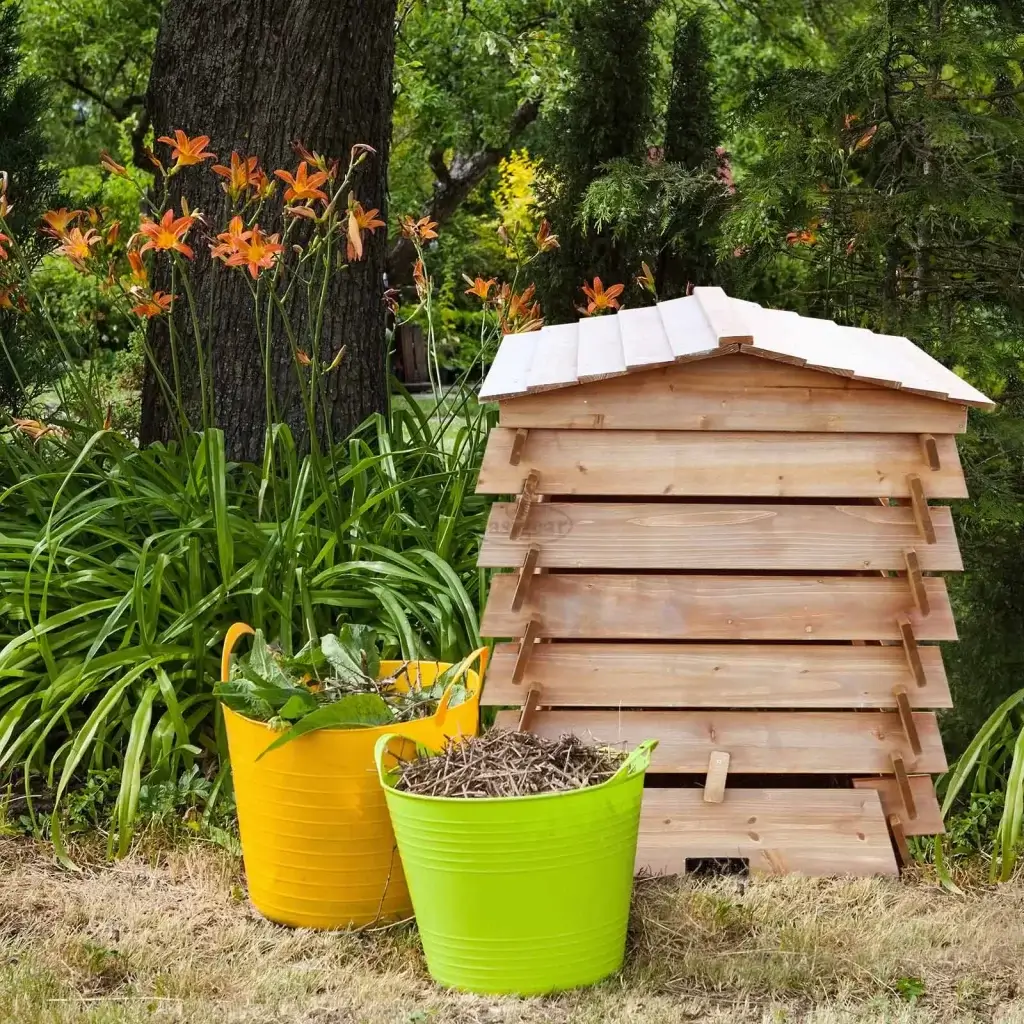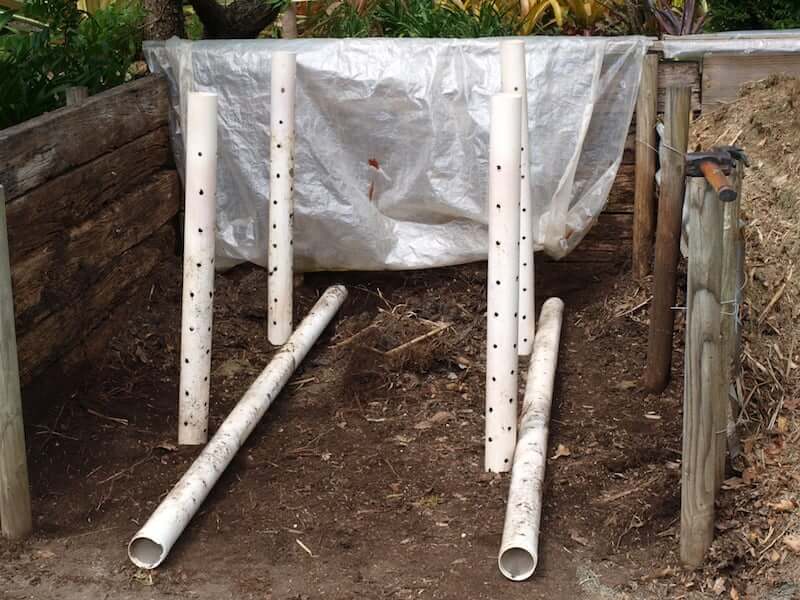In Autumn workload in the garden is finally starting to lower. Most of the plants are already harvested, preserves are nicely stocked in the cellar and you can start cleaning your garden and prepare for next season. As leaves start to fall from the trees and waste from the garden is starting to pile up, many people wonder what to do with all of this? I can bet that every seasoned gardener will answer that question with one word: composting.
Composting is an eco-friendly and cost-effective way to nurture your soil. By letting your green waste decompose and then layering it in your garden, you basically give back to the soil all of the nutrients you took away from it when growing your vegetables. The only drawback is it takes time, but with some tricks you can speed up the process. Let me show you how to create your first compost pile.
Where do you place your compost?
First challenge is choosing right location for your compost. If you’re not going to use decorative compost bins or tumblers, you better choose some spot that is out of sight. You need to keep in mind that your compost pile is going to look like trash for most of the time and can even smell if you use bad ratios of green to brown materials. So please don’t put it in the centre of your garden, better hide it behind some bushes or a shed. On the other hand you need to select a spot that receives moderate sunlight and is easily accesible. After all you need enough space to onload you trolley full of garden waste.
How to create a compost bin?

So the easiest and the cheapest way of organizing your compost is to create the compost heap. No bins, no borders, just a big pile to which you add more and more materials. It’s easy to make and easy to turn as there is nothing blocking your way. The downside is it takes more time than other methods as the materials as not gathered tightly. Also unconsciously you may make it spread wider than higher. Imagine that you arrive at the pile with new organic waste and it’s too heavy to put it at the top, so you put the material at the side os the pile. You repeat it a couple of time and before you know it your pile is 30 feet wide but only 4 feet tall. Try to avoid this situation. The more compressed the material is the better, as it reaches higher temperature and speeds up the decomposting process.

DIY compost bin is at the moment the most popular way of composting. All you need to make it are some old pallets or wood boards and eventually some mesh fence. By creating walls for your compost pile, you prevent it from spreading wide. The temperature inside is higher and the material is decomposting faster. Also it looks neater and more elegant than a regular pile.

If you’re not into DIY, of course you can buy a compost bin. They come in all shapes and styles. Some are even so decorative, that without a shame you can put it in your garden or somewhere around the house.
How to take care of your compost heap?

Making a compost is slightly more comlicated than just throwing organic waste onto the pile. If you want the best effect you need to remember about a few things:
What materials can you use?
Some people will tell you that you can compost every organic material. Technically they are right. Everything will decompose, but not everything is beneficial for your garden. Try to avoid fresh weeds with seeds, as they can survive and later grow in your garden. Don’t use diseased plants as the disease can also survive. The high temperature should kill it, but you can never be sure. Generally garden waste is organized into two main categories:
Brown materials: are things like fallen leaves, straw, twigs, branches, hay, eggshels, paper and cardboard (with no ink on it), sawdust, teabags and wood ash. Use wood ash sparingly as it can increase ph level and therefore limit microbial activity. Also when collecting leaves avoid wallnut leaves as they contain substances that inhibit the growth of many plants. Oak leaves are great for acid loving plants, but take much more time to decompose. Brown materials are high in carbon and help provide structure and aeration.
Green materials: are things like grass clippings, vegetable scraps, coffee grounds, plant cuttings and fresh manure. If you’re using manure in your arden alway compost it first, as fresh may be to strong and can kill some of the plans. Also compost fresh vegetable scraps, as s the oil often used in the cooking process will slow down the composting process, and may attract unwanted animals. Green materials are high in nitrogen and help to heat up the compost pile.
The golden ratio in creating the highest quality compost is 3 parts brown materials to 1 part green materials. Start with a layer of coarse materials (like twigs) at the bottom to help with aeration, then alternate layers of brown and green materials.
Watering your compost pile

Water used properly can speed up the process. Your compost needs moisture to help the microorganisms break down the materials effectively.
It should be as moist as a wrung-out sponge. Add water if it’s too dry or dry materials if it’s too wet. A smart trick to water your compost evenly throught the whole pile is to use pvc pipe with drilled wholes. When the pile is still low you put some pipes in vertically and add some materials around it. Then when you see you need to water your compost, you pour water into the pipes an it gets distributed evenly to the very bottom.
Turn your heap
Turn your compost heap every few weeks with a garden fork or shovel. This aerates the compost and speeds up decomposition by providing oxygen to the microorganisms. If you’re not into this type of workout consider getting a compost tumbler. It makes turning the material much easier.
Cover your pile
Is it’s rainings a lot or you want to speed up, cover your compost bin/pile with a lid or a tarp. It will protect the materials from elements and also increase the temperature inside the pile. This will also deter pests from setting up home inside your compost pile.

Give it time
Creating good quality soil won’t happen in the fortnight. It needs time and care for the best outcome. Autumn-to-spring composting follows nature’s weather cycles, so it’s a slow process that may take six months or more. Cold winter temperatures suppress biological activity in compost, but repeated freezing and thawing destroys tough plant tissues, which better prepares them to rot. Generally compost is ready to be harvested when the finished product is a rich dark brown color, smells like earth, and crumbles in your hand.
By recycling your leaves and garden waste, you’re not only enriching your garden but also contributing to a healthier environment. Remember, composting is a process that requires patience and care, but the rewards are well worth it. Stay tuned for more gardening tips and tricks, and happy composting!
